Our 84% Less Plastic Study: August 2021
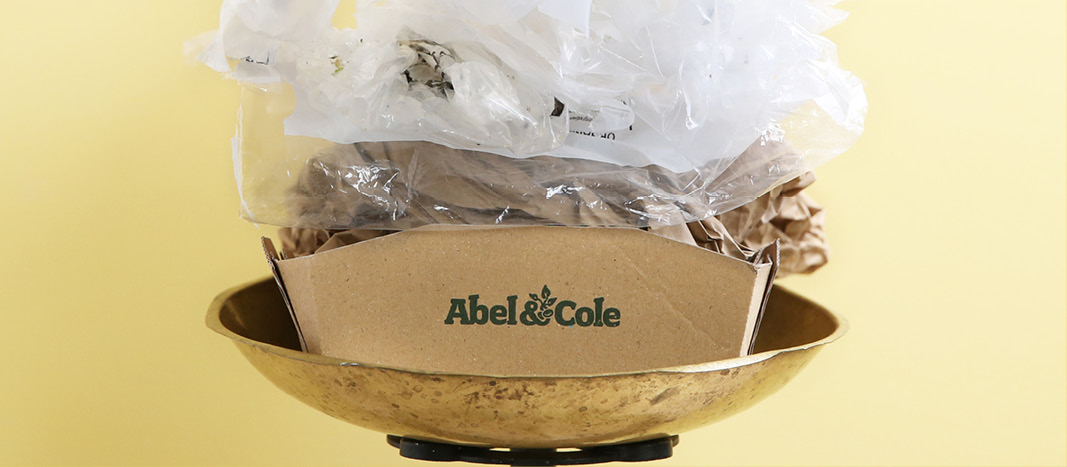
In August 2021, we conducted a study to compare the packaging used in our most popular, weekly, organic Fruit & Veg Box (our Medium Fruit & Veg Box), versus the packaging used for the same organic produce from Tesco, Sainsbury’s, Ocado and Waitrose. We wanted to see how much plastic, paper and other forms of packaging were being used by each of these supermarkets.
We ordered our Medium Fruit & Veg Boxes across four consecutive weeks (from Monday 2nd – Friday 27th August 2021). Knowing what would be arriving in our boxes on these dates, we were able to order the same produce online from Tesco, Sainsbury’s, Ocado and Waitrose.
To ensure that the study was as fair as possible, we selected our produce for comparison in the following priority order:
1. Where there was an organic, own-brand option available, this was selected first.
2. Where there was no organic, own-brand option available, the closest organic option (with regard to weight) was selected.
3. Where there were two versions of the same weight available, the cheapest, organic option was chosen.
4. In the small number of cases where there was no organic version of the produce available, we ordered the non-organic version, following the same rules as above, i.e. own-brand option first, followed by the closest in weight, followed by the cheapest option.
Tesco, Sainsbury’s, Ocado and Waitrose all offer the option to have produce delivered without plastic bags, while we deliver in returnable, reusable carboard boxes. For this reason, we did not measure the in-transit packaging used in each delivery. Instead, we only weighed the packaging of each individual foodstuff, i.e. we weighed the wrapping that apples were packed in, rather than the plastic bag that the shop was delivered in.
Over the four weeks, we weighed all of the produce on the same set of digital scales, which were set up in the same place each week. We weighed all of the packaging in grams, to the nearest 0.1g. Our weights and measurements included all food labels and any use of elastics.
All types of plastic packaging were grouped together under the collective heading of ‘plastic’. Some of the plastic samples compared in the study had a ‘home compostable’ label. But as recycling and composting varies widely depending on the council collecting the packaging, we have treated all of these supermarket packaging samples, including our own, as plastic.
The following items were compared across four weeks. For complete transparency, we have highlighted where we were unable to secure exact matches for our products; either by virtue of the produce from other supermarkets not being organic, a like-for-like substitution, or both.
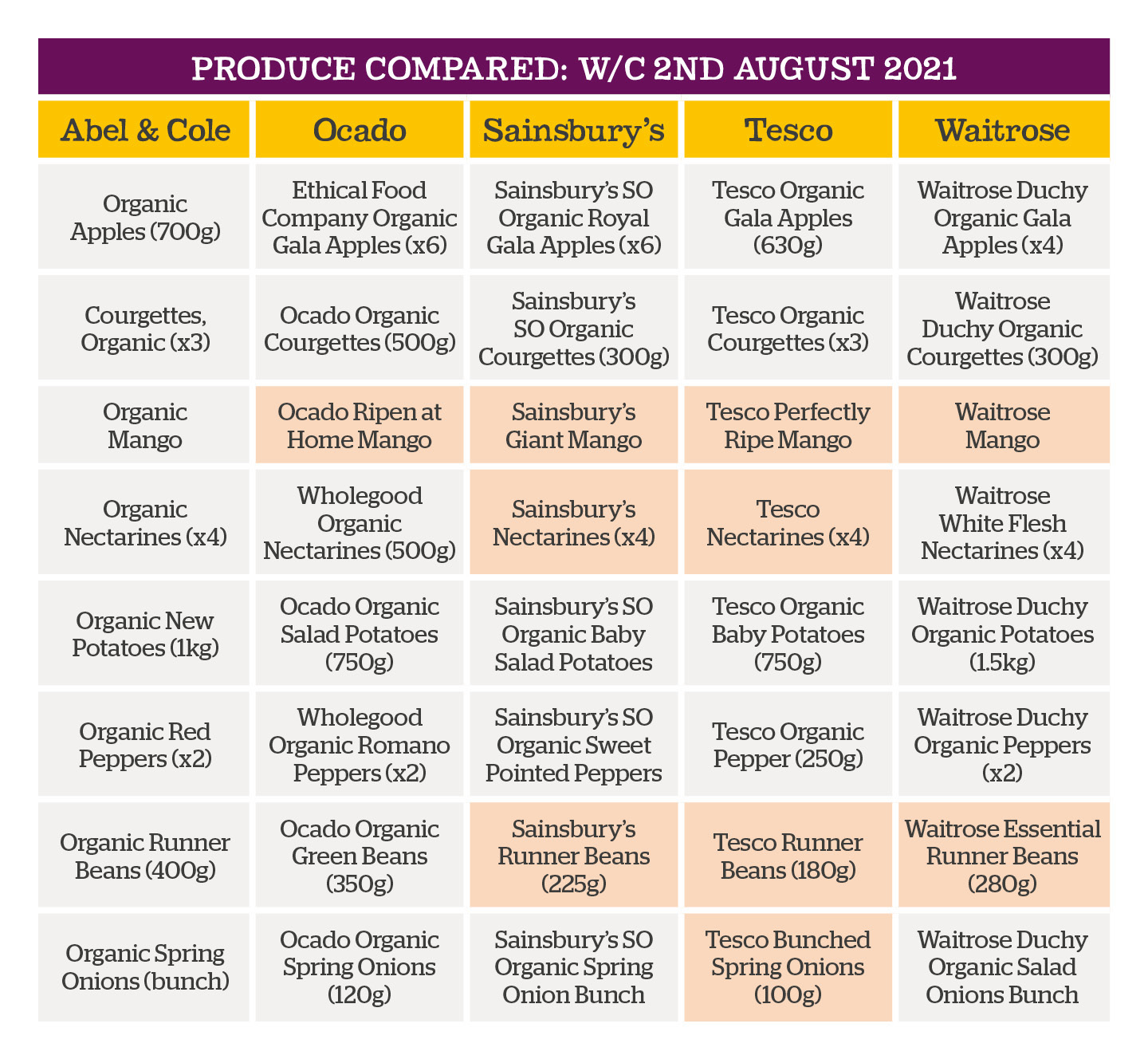
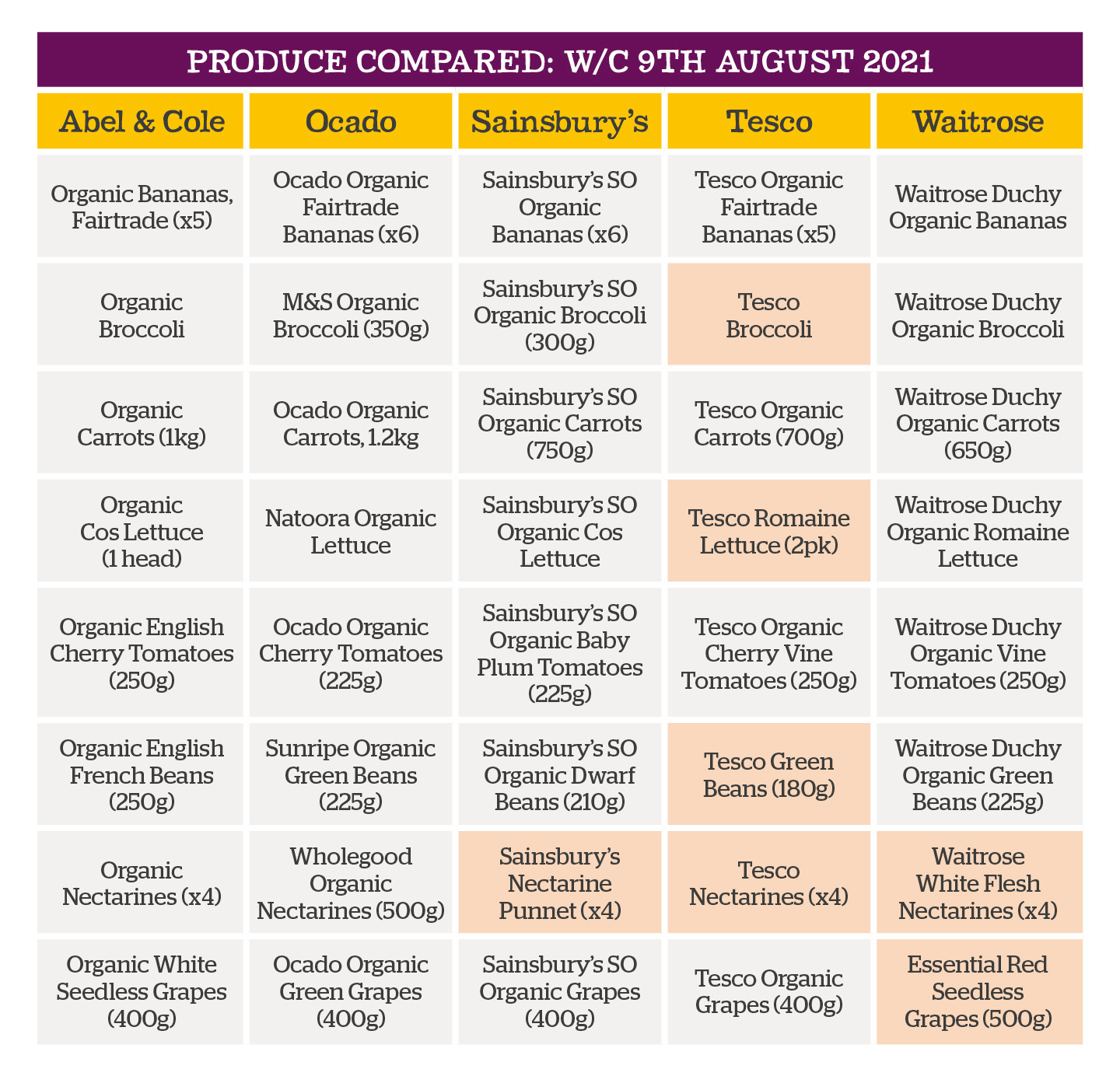
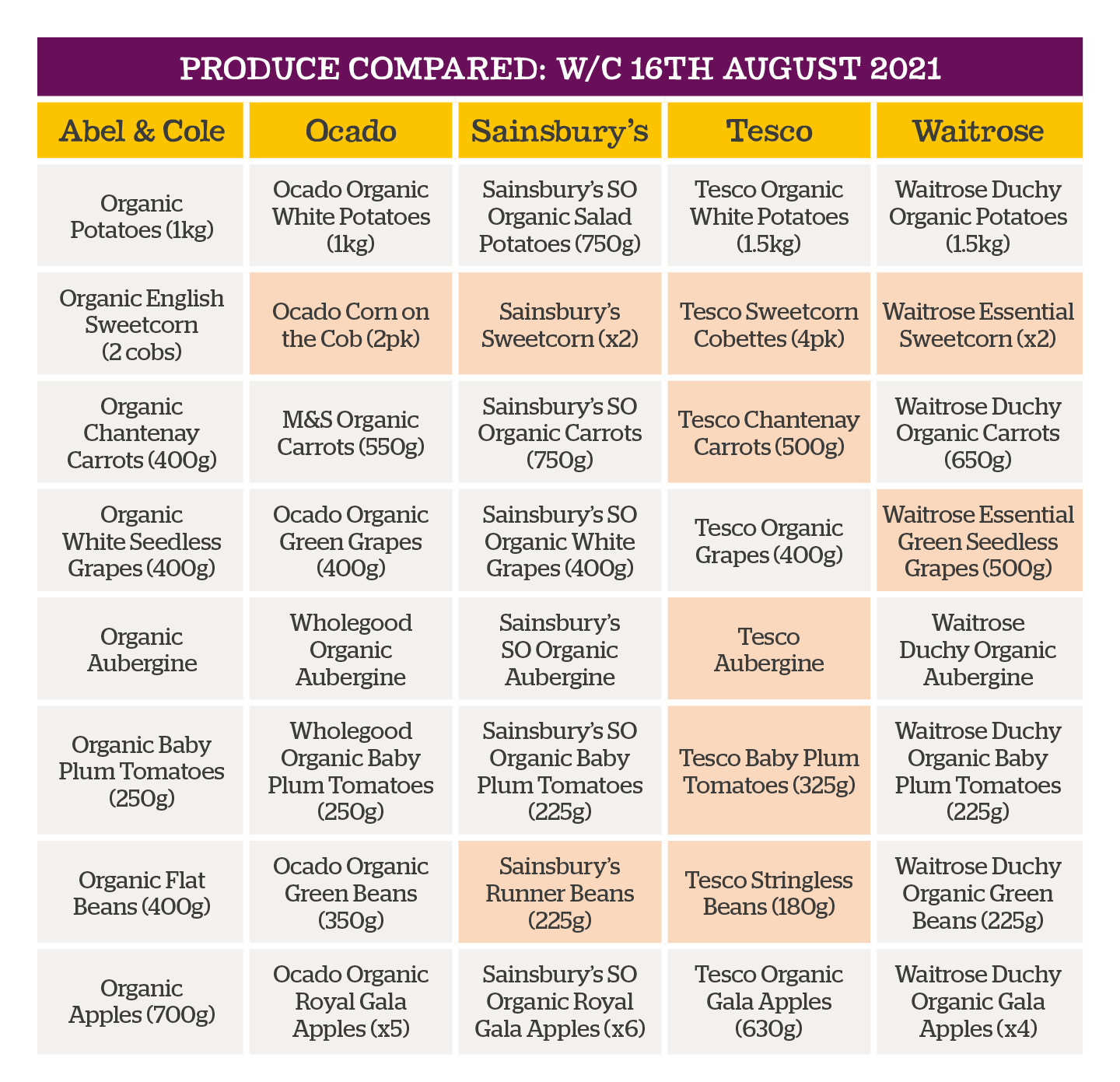
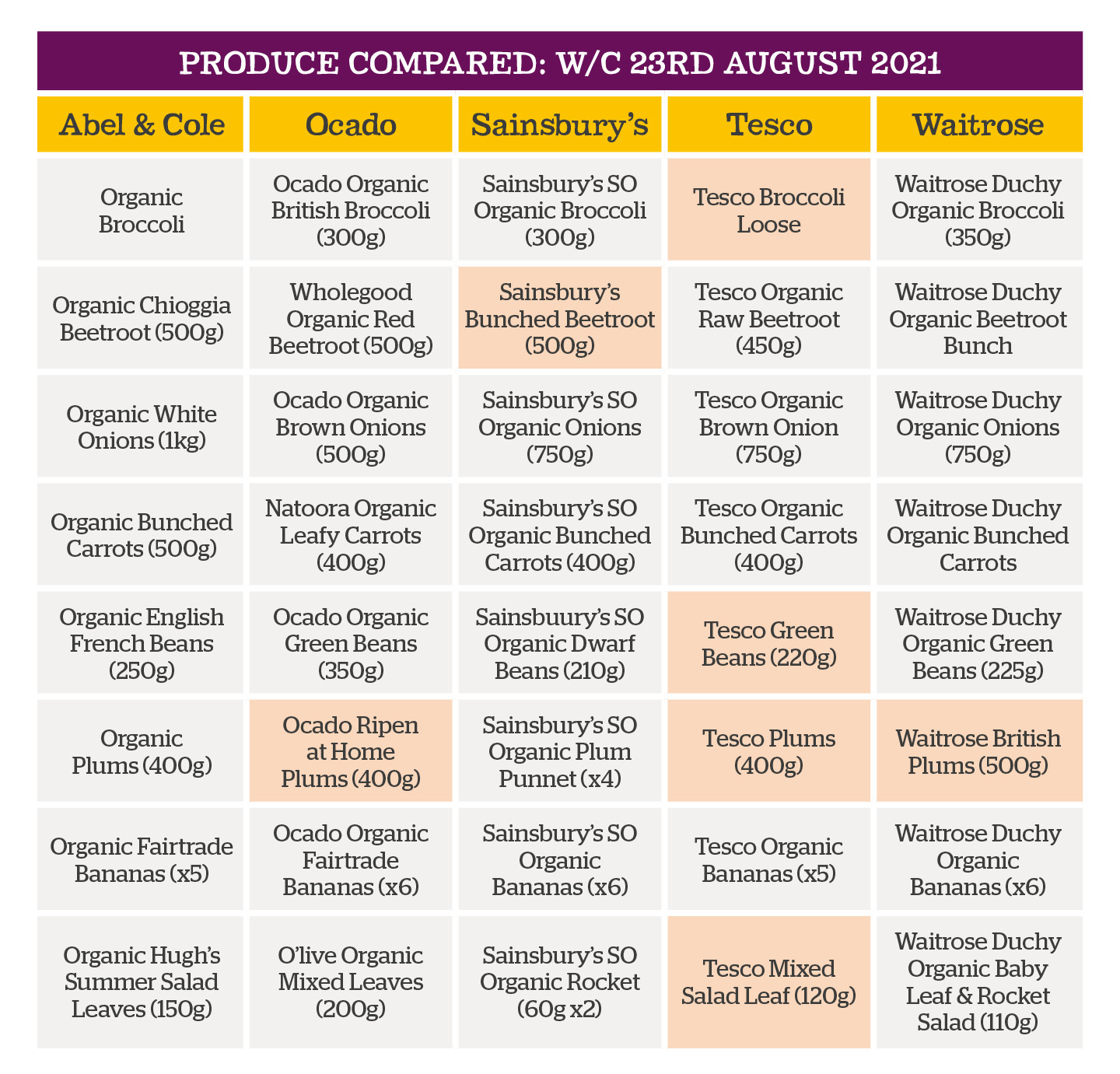
Below are the week-by-week results of our study, which recorded the following metrics: the total amount of plastic (g), the total amount of paper (g), the total amount of other packaging (g), the total number of pieces of packaging, the total number of pieces of plastic, and the total weight of all the packaging combined (g).
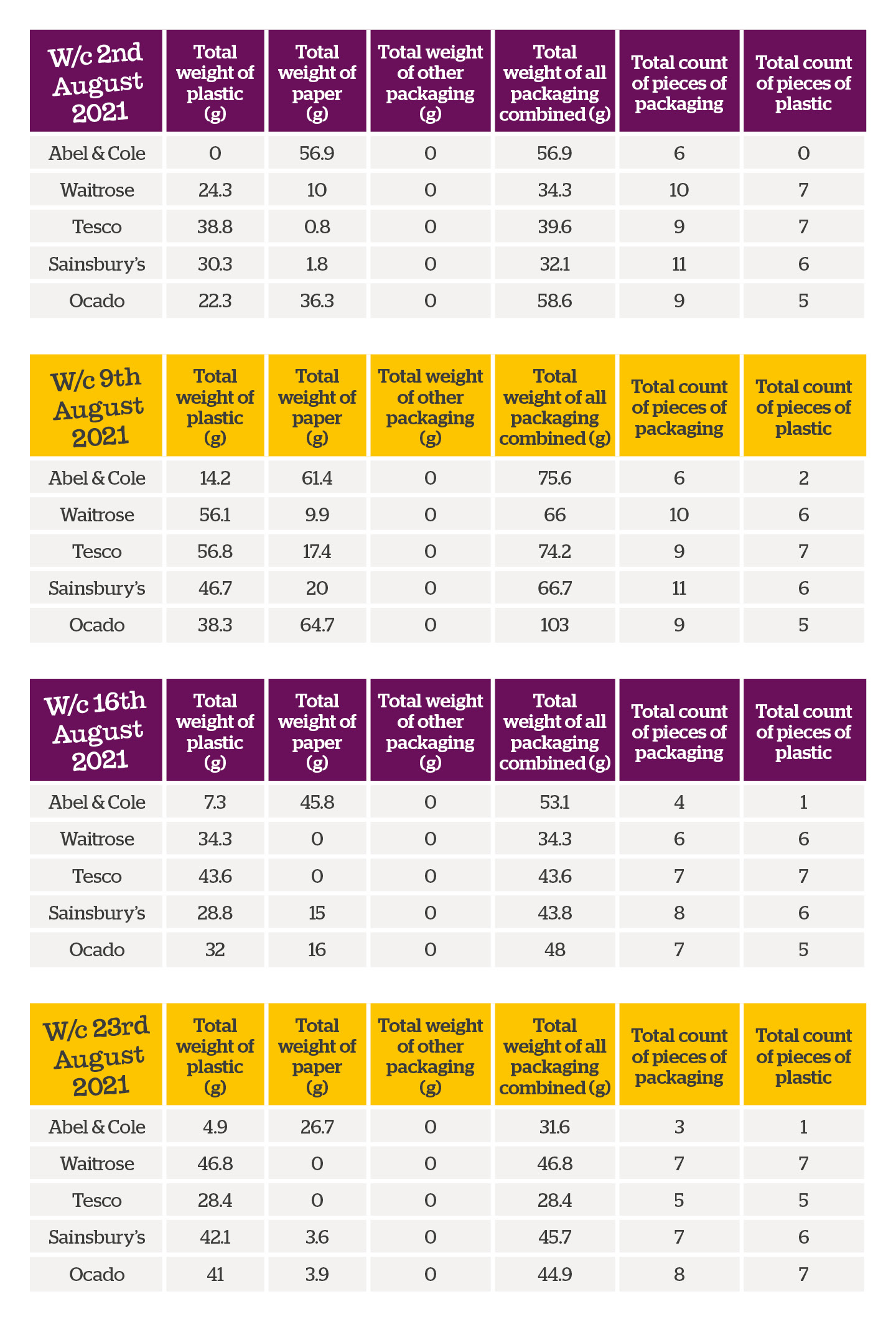
Below are the final results, calculated by combining the totals accrued for each supermarket over this four-week period.
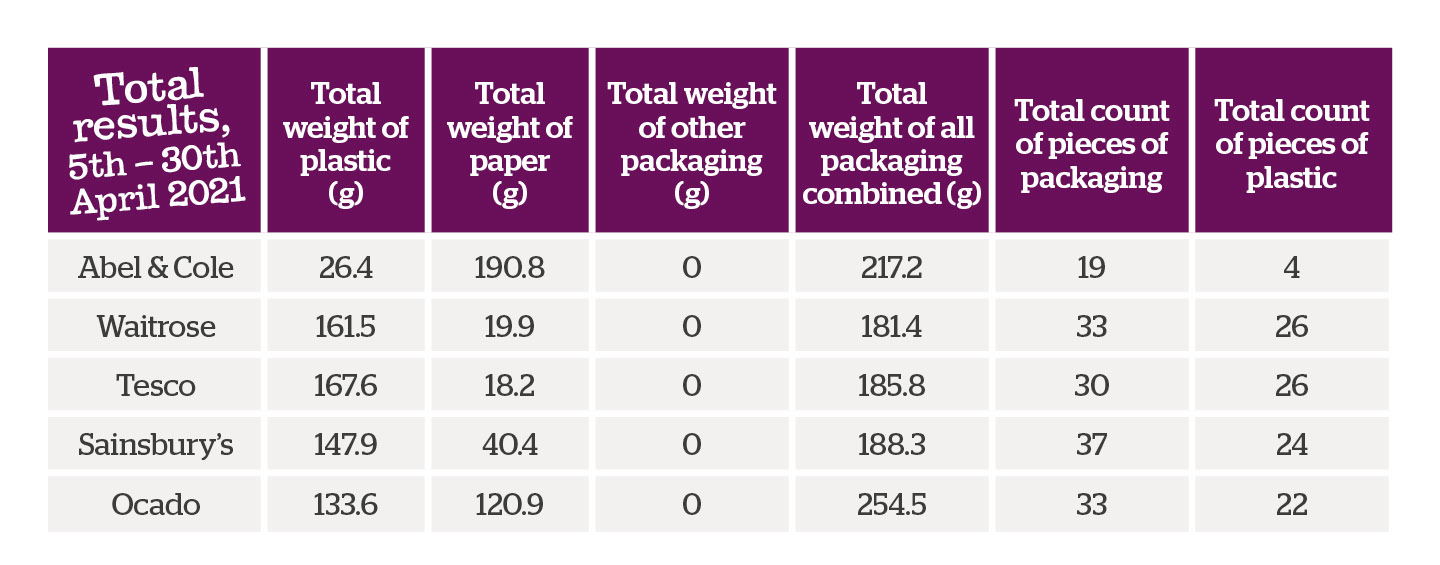
We’re incredibly proud to be able to say that, according to the results of our comparative study, there’s 84% less plastic in our organic Fruit & Veg Boxes. Excitingly, these results are even better than the previous packaging study we conducted in April 2021, showing a 9% improvement.
If you’re inspired to make a switch to a more sustainable food delivery, you can find everything you need to vote with your fork, right here.
Published December 2021


